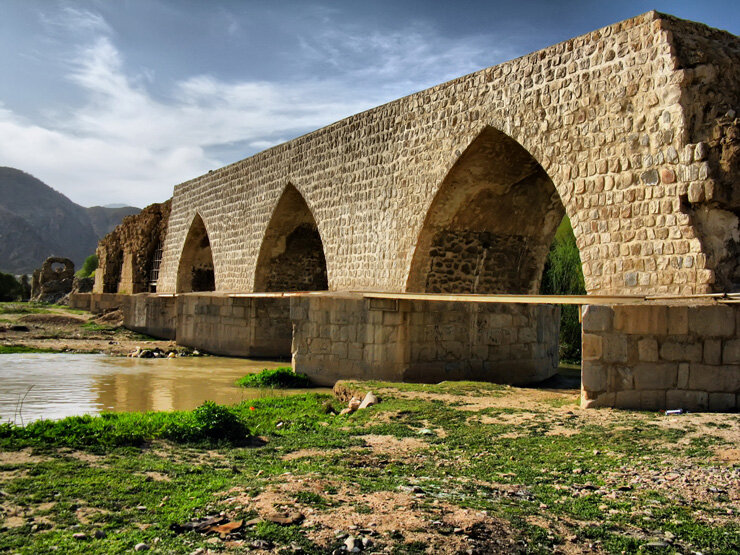Sassanid-era arch bridge restoration work completed

TEHRAN – A project to restore and reinforce Pol-e Shapuri, a Sassanid-era arch bridge in western Iran, has been completed.
“The restoration and strengthening works on Shapuri bridge, which is one of the architectural masterpieces of Lorestan province, were carried out by experienced masters using traditional building materials,” the provincial tourism chief, Seyyed Amin Qasemi, announced on Wednesday.
Named after the Sassanid King Shapur I (reigned 241 CE–272), the bridge has 28 arches (of which only 6 remain) and 27 pile bridges, each 61 square meters; five of its arches are intact and the others have been destroyed by natural factors.
The arches of the bridge have been constructed of stone, whereas the bridge itself is a mixture of stone and mortar. The monument is registered on the list of national cultural heritage as well.
Lorestan, which is a region of raw beauty, was inhabited by Iranian Indo-European peoples, including the Medes, c. 1000 BC. Cimmerians and Scythians intermittently ruled the region from about 700 to 625 BC.
The Luristan Bronzes noted for their eclectic array of Assyrian, Babylonian, and Iranian artistic motifs, date from this turbulent period. Lorestan was incorporated into the growing Achaemenid Empire in about 540 BC and successively was part of the Seleucid, Parthian, and Sassanid dynasties.
AFM/
Leave a Comment